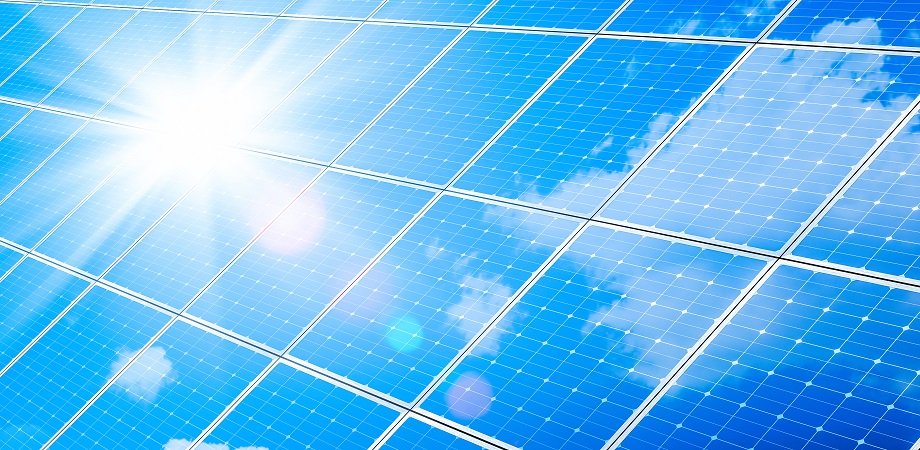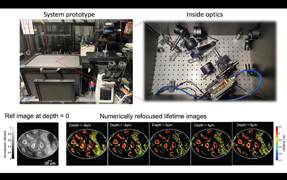Increasing efficiency in two-terminal tandem solar cells

Solar photovoltaics (PV) is a major stepping-stone in our transition towards a sustainable energy economy. The International Renewable Energy Agency (IRENA) roadmap suggests that by 2050, electricity generation from PV should reach 43 percent of the total installed power capacity. This can be turned into reality by reducing the cost of PV systems and increasing the efficiency of solar cells, which would enable large-scale installations of compact PV.
To this end, a recent study published in the Journal of Photonics for Energy (JPE) explores the efficiency gain provided by tandem solar cells in which multiple semiconductors with different energy gaps are stacked atop one another, with a spectral splitter introduced between the top and bottom terminals.
Why this particular design? It turns out that tandem solar cells are sensitive to a broader region of the sunlight's spectrum. This sensitivity allows them to harvest light efficiently and potentially reach an overall efficiency higher than the theoretical limit of conventional solar cells. However, they typically suffer from inefficient light trapping and management caused by parasitic light absorption in inactive layers and reflection between layers. Recent studies have addressed these issues, yet the concept of distributing sunlight in the tandem subcells with controlled spectral splitting is underexplored.
This is where a team of scientists from The Netherlands, who performed the study, comes in. They designed a two-terminal tandem solar cell with a perovskite top cell and silicon bottom cell and inserted spectral splitters between them. "In PV research, every digit that can be gained in cell efficiency is crucial. Adding a spectrum splitting interlayer can help us harvest the maximum current and voltage by splitting the incident sunlight into low- and high-energy spectral bands and distributing them effectively among the top and bottom cells," explains Albert Polman of NOW-Institute AMOLF, who led the study.
Polman notes that introducing spectral splitters can also lead to cheaper solar cells, higher throughput in fabrication, and lower toxicity per unit cell area. Additionally, they can expand the scope of tandem cells for applications in photoelectrochemical splitting of water.
Polman's team considered two kinds of spectral splitters, namely "planar" and "Lambertian" splitters, in their study. The planar splitter acts like a mirror, reflecting the light straight back to the top cell to allow it to be absorbed there. In contrast, the Lambertian splitter reflects light in an angular fashion so that it has to complete a much longer path through the solar cell, and hence can be absorbed more easily.
According to their calculations, in the presence of a spectral splitter, industrially applicable top cells with energy gaps of 1.7 eV and higher showed a 5 to 6 percent gain in absolute efficiency in the limit of infinite thickness for a 500 nm thick top cell. Moreover, their predictions revealed that choosing a Lambertian spectral splitter over a planar splitter significantly improves the efficiency enhancement.

Spectral splitter in a 2-terminal (2T) tandem cell. Left: Limiting efficiencies of 2T tandems with a 500-nm thick perovskite top cell; planar (dashed yellow line) and Lambertian spectral splitter (solid yellow line). Right: Schematic of Lambertian spectral splitter (in gray). Credit: Neder, Tabernig, and Polman, doi 10.1117/1.JPE.12.015502.
While the team's study is theoretical, the results are economically interesting. Provided there is no significant splitting performance loss with upscaling, and the fabrication steps are of similar costs, the efficiency gain per layer of the perovskite/silicon tandem with a Lambertian spectral splitter is within an economically competitive range.
Siva Sivoththaman, Associate Editor of JPE and Director of the University of Waterloo's Centre for Advanced Photovoltaic Devices, notes that the paper makes a timely and novel contribution to photovoltaic cell architectures based on perovskite/silicon tandems. More specifically, "The idea put forward on embedded spectrum splitters is theoretically shown to result in significant efficiency gains, pushing the thermodynamic limits upward. Although a theoretical work, experimental parameters were used to reliably show how the Lambertian spectral splitter benefits structures with high-bandgap top cells."
Solar cells may still have a long way to go before they replace conventional energy sources. But this study offers hope for their success in the future.
Read the open access article by V. Neder, S. W. Tabernig, and A. Polman, "Detailed-balance efficiency limits of two-terminal perovskite/silicon tandem solar cells with planar and Lambertian spectral splitters," J. Photonics Energy 12(1), 015502 (2022), doi 10.1117/1.JPE.12.015502.
| Enjoy this article? Get similar news in your inbox |
|



